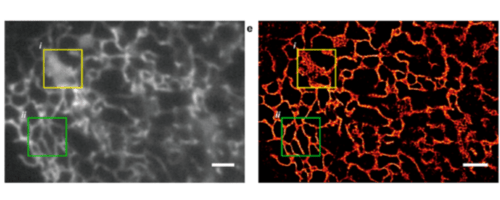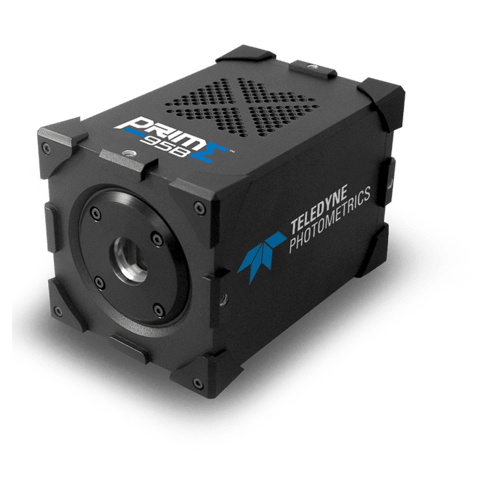Super-Resolution Single Molecule Localization
Prof. Pingyong Xu, Dr. Mingshu Zhang
Key Laboratory of RNA Biology, Institute of Biophysics, Chinese Academy of Sciences
Background
Single-molecule localization microscopy (SMLM) techniques, such as photoactivation localization microscopy (PALM), achieve some of the highest spatial resolutions among all the super-resolution imaging methods. However, image reconstruction in PALM requires a large number of raw images, which leads to low temporal resolution. Limited photo-controllable fluorescent protein probes (PCFPs) also restrict the widespread application of SMLM.
Prof. Pingyong Xu's lab is engaged in the development of new super-resolution microscopy technologies. Previously, his group developed a new super-resolution method named single-molecule-guided Bayesian localization microscopy (SIMBA). It uses only 100 raw frames to calculate a super-resolution image with a 50 nm spatial resolution, which efficiently increases the temporal resolution of SMLM.
 Figure 1: Quick-SIMBA imaging of the endoplasmic reticulum structures in live U2OS cells and COS-7 cells. (a) A diffraction-limited
Figure 1: Quick-SIMBA imaging of the endoplasmic reticulum structures in live U2OS cells and COS-7 cells. (a) A diffraction-limited image represented by the sum of the first 50 raw frames. (b) Reconstructed images using the Quick-SIMBA algorithm.
Challenge
To achieve higher temporal resolution with SIMBA, prof. Xu intended to develop imaging techniques that improved on SIMBA and required even less raw frames for reconstruction. Another way to improve temporal resolution is to use a camera with a higher frame rate, with sufficient sensitivity to image with shorter exposure times. However, the slow readout speed of a previous EMCCD camera solution and the suboptimal properties of existing PCFPs hindered them from further increasing the temporal resolution of SIMBA.
[We] benefited from the high speed and sensitivity of Prime 95B, we could further increase the temporal resolution of SIMBA with shorter exposure times.
Prof. Pingyong Xu , Dr. Mingshu Zhang
Solution
To overcome the shortcomings of their EMCCD, Prof. Xu's lab decided to use the Teledyne Photometrics Prime 95B sCMOS. Combining the Prime 95B with pcStar, a new PCFP also developed by Xu lab, they created a new super-resolution methodQuick-SIMBA. Quick-SIMBA only needs 50 raw frames (2-5 ms exposure) to reconstruct a final image. It could achieve the highest temporal resolution (0.1 - 0.25 s) with large FOV (from 76 × 9.4 μm2 - 76 × 31.4 μm2) among all SMLM methods.
With Quick-SIMBA, the dynamic movements of the endoplasmic reticulum dense tubular matrix were resolved, which are difficult to recognize by diffraction-limited microscopy. The combination of pcStar and Quick-SIMBA holds great potential for super-resolution imaging of short-term events, such as transcriptional bursts and cell mitosis, or for tracking short-lived proteins in living cells.

Learn More About The Prime 95B
Reference
Fast Super-Resolution Imaging Technique and Immediate Early Nanostructure Capturing by a Photoconvertible Fluorescent Protein. M Zhang et.al. Nano Letters 2020 20 (4), 2197-2208